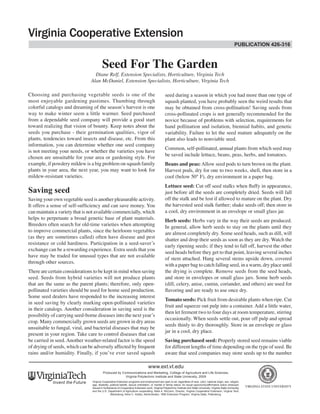This document provides guidance on growing vegetable seeds and transplants for the home garden. It discusses choosing seeds, saving seeds from year to year, starting seeds indoors and outdoors, caring for seedlings, and transplanting seedlings into the garden. Specific instructions are provided for common vegetables on seed viability, planting depth and spacing, and the optimal time to start seeds indoors for transplanting.



